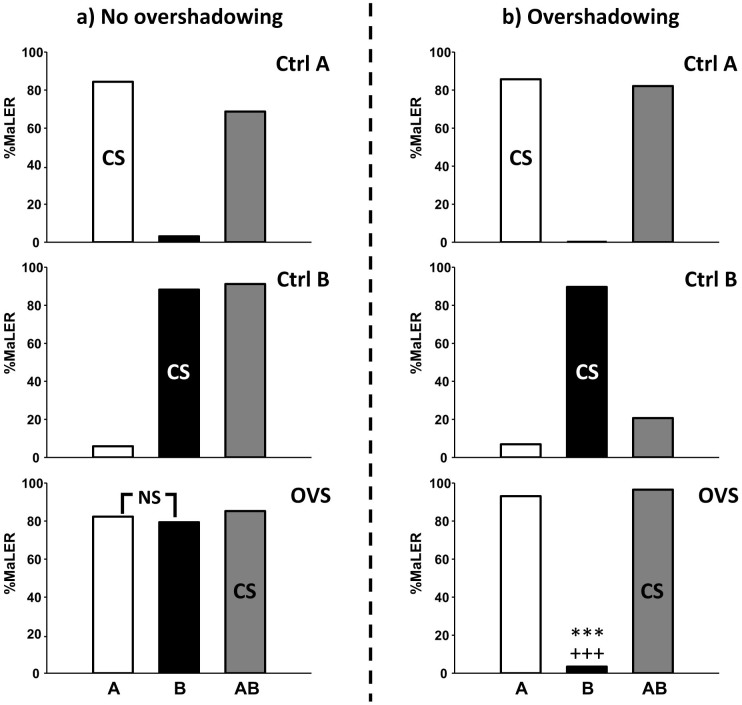Figure 2. The case of overshadowing.
Three groups of animals are trained independently, two with the single odours A and B (Ctrl A and Ctrl B, respectively), and one with the binary mixture AB (OVS) as conditioned stimulus (CS). The figure shows the percentage of ants responding to the conditioned odour with MaLER in a test performed 1 h after training. Each group was tested with A (white bar), B (black bar) and AB (grey bar). All groups responded highly to their respective CS. (a) Example of absence of overshadowing: the OVS group responds equally to both components A and B of the mixture (example from the heptanol/nonanal combination, see Supplementary Fig. 3b). (b) Example of overshadowing: the OVS group responds significantly less to B than A (***) and responds also significantly less to B than after training to B alone (+++; see black bars of Ctrl B and OVS) (example from the octanol/octanal combination, see Supplementary Fig. 6a). (NS) non-significant.

